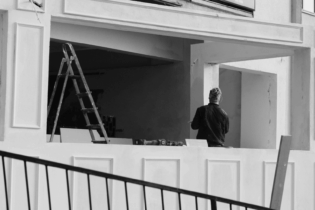By June this year Esorfranki had secured an order book for pipe jacking and associated projects worth in the region of R100 million. This will comfortably see the pipe jacking team through to the end of the year.
This upswing in business is attributed to increasing recognition of the team’s world-class expertise in this arena and to Esorfranki’s renewed focus on grouting and shaft sinking projects. “The current order book exceeds our performance compared to the same time last year,” explains Anton Naude, Esorfranki’s pipe jacking director. “We’ve added additional personnel to our team to help us manage this workload. Our core jacking team has decades of experience in all kinds of challenging conditions, with a track record of successful projects spanning more than three decades. “Our team, which includes a surveyor, is complemented by a full range of jacking equipment. At any given time we are able to have 23 pipe jacks out in the field. Uniquely, we also have our own four-man in-house blasting team, making us the only company in South Africa to be able to conduct blasting, surveying and pipe jacking using in-house capabilities.” Pipe jacking is a specialist technique used to install underground pipelines and culverts with minimal disruption to property, traffic or services on the surface. Pipes and culverts are progressively advanced through the ground using high performance hydraulic jacks. Material at the head of the pipeline or culvert is excavated to the exact profile of the structure prior to jacking. This material is removed to the jacking pit via the structure being jacked, where it is hoisted and tipped. Pipe jacking is used for sewers and stormwater drains, gas and water mains, electricity and telephone cables, box culverts and subways. The company has just completed a R 2.5-million sub-contract awarded by MIS Pipelines for Johannesburg Water, involving 102 m of jacking underneath the Jukskei River at a depth of about 9 m. The project, which started in January 2012, called for jacking a domestic water pipe with an inside diameter of 1 200 mm through solid rock and water. “These difficult conditions required us to pump water out of the working area on a 24/7 basis to keep the river water down to a level that allowed us to work effectively,” states Naude. “When we started the project it was envisaged that we would work 1.5 m below the river bed, but this was subsequently extended to 3 m.” At Eskom’s Medupi Power Station, Esorfranki is working towards the completion of a project to join three tailings dams by pipe jacking two 1 800 mm inside diameter pipes through 60 m of solid rock. This project, awarded as a subcontract to Civcon, has involved blasting activities and putting anchors into a cube of solid concrete to hold the backwall in position during the jacking process. The Esorfranki team is working double shifts to complete the project on time. The pipe jacking team is also active at Anglo American’s Kriel Colliery 45 km outside Witbank, Mpumalanga, which provides coal for Eskom’s Kriel Power Station. This subcontract awarded by Cycad Pipelines, involves jacking a water line for the Department of Water Affairs.“Here, we proposed lateral support next to the road, along with micropiles going down to 9 m,” says Naude. “We’ll establish two caissons on either side of the road to pump out the water. After placing a 16 m slider, we’ll jack a 1 500 mm steel pipe under the road.”
Also at Kriel, and with an eye on re-establishing itself in the shaft sinking and grouting market, Naude’s team is poised to begin work on securing a high wall and, alongside Esorfranki’s Civils Division, sinking a 33 m shaft. Mine management is planning to revisit mining at the 20-year-old high wall and Esorfranki has been called in to secure the area, which is about 30 m high. This will be accomplished using building scaffolding and cranes with man-cages. First, the loose material will be cleaned out using high pressure water and air, after which gunite with fibres will secure the remaining material. “We’ll erect mesh from the top and introduce 1.8 m rock bolts and 75 mm of gunite,” Naude explains. “This job is expected to take just under five months and we are currently moving machinery and materials onto site.” For the shaft sinking project, Esorfranki is providing excavation and support for the new 14 m diameter shaft at Kriel Colliery. The team is planning to excavate down 18 m through soft material and then blast excavate the remaining 15 m. This shaft will hole through into the existing mine. Elsewhere in the country, the team has been awarded another grouting project, this one a subcontract from Norland Construction at the Cengane Dam in the Eastern Cape, about 80 km from Umtata, where a new dam wall is planned. Esorfranki will provide about 600 m2 of dry curtain grouting under pressure to fill any cavities before construction work begins. “This is the first job of its kind that we’ve undertaken and we regard it as a step in the right direction as part of our strategic plan to re-enter the grouting market,” says Naude. Esorfranki also specialises in bridge jacking, having successfully jacked four large bridge structures into place in the past two years. This technique ensures minimal disruption to road and railway traffic, making it a sought-after method in a rapidly urbanising environment. Working in conjunction with specialist consulting engineers Jones & Wagner, the company recently completed the construction of a road underpass through a railway embankment in Newclare, Johannesburg South, to link Price Street and Hoy Street for the Johannesburg Development Agency. This R7.8-million project was conducted for Concor Civils and included lateral support. Esorfranki constructed a 14-m wide by 8-m high culvert into the railway embankment, through which a bridge was successfully jacked.







